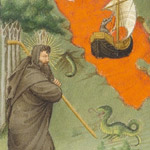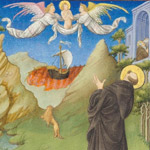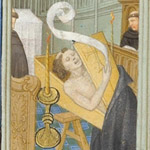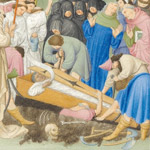Saints Paul and Anthony
 |
 |
 |
Above: Details of illuminations from Folio 191v, Folio 193r, and Folio 194r from the Belles Heures of Jean de France, duc de Berry, 1405–1408/9. Herman, Paul, and Jean de Limbourg (Franco-Netherlandish, active in France by 1399–1416). French; Made in Paris. Ink, tempera, and gold leaf on vellum; 9 3/8 x 6 5/8 in. (23.8 x 16.8 cm). The Metropolitan Museum of Art, New York, The Cloisters Collection, 1954 (54.1.1).
A self-contained quire of two bifolia, eight pages, presents the story of two hermit saints, Paul and Anthony. This is the last of the full-scale added picture cycles in the manuscript, but it is unlikely to have been the last one to be completed. Compositions in this section are conceived for narrative impact, and their layouts support that purpose rather than spatial coherence. Great and crazy stories are here—scenes you never imagined. Read more »



